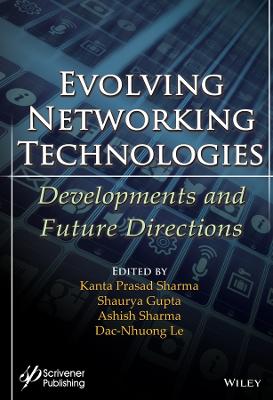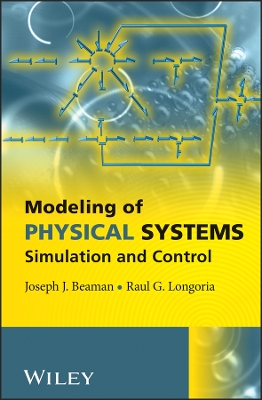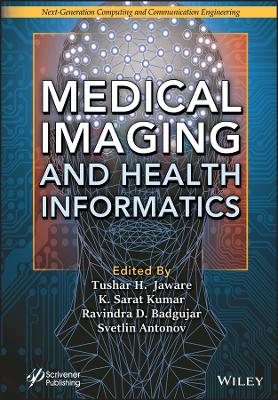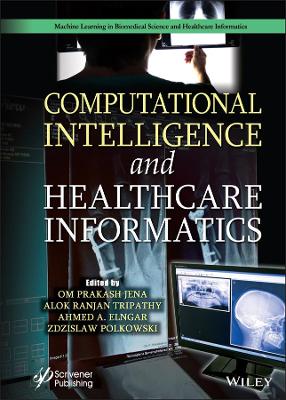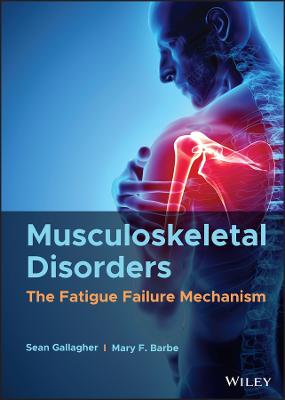Applied Smart Health Care Informatics
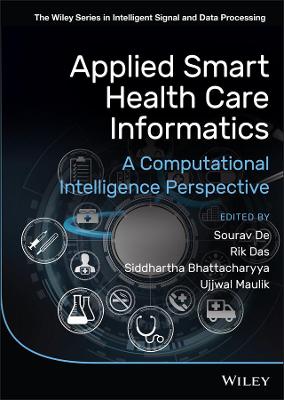 -15%
portes grátis
-15%
portes grátis
Applied Smart Health Care Informatics
A Computational Intelligence Perspective
Bhattacharyya, Siddhartha; Das, Rik; De, Sourav; Maulik, Ujjwal
John Wiley & Sons Inc
03/2022
224
Dura
Inglês
9781119743170
15 a 20 dias
508
Descrição não disponível.
Preface xiii
About the Editors xix
List of Contributors xxv
1 An Overview of Applied Smart Health Care Informatics in the Context of Computational Intelligence 1
Sourav De and Rik Das
1.1 Introduction 1
1.2 Big Data Analytics in Healthcare 2
1.3 AI in Healthcare 3
1.4 Cloud Computing in Healthcare 4
1.5 IoT in Healthcare 4
1.6 Conclusion 5
References 5
2 A Review on Deep Learning Method for Lung Cancer Stage Classification Using PET-CT 9
Kaushik Pratim Das, Chandra J, and Dr Nachamai M
2.1 Introduction 9
2.1.1 Scope of the Research 10
2.1.2 TNM Staging 11
2.1.2.1 TNM Descriptors for Staging per IASLC Guidelines 11
2.1.2.2 PET-CT Scan in Lung Cancer Imaging 12
2.2 Related Works 12
2.2.1 Artificial Intelligence in Medical Imaging 14
2.2.2 Classification for Medical Imaging 14
2.2.2.1 Deep Learning 15
2.2.2.2 Image Classification Using Deep-learning Techniques 15
2.3 Methods 15
2.3.1 Transfer Learning 15
2.3.2 AlexNet 16
2.3.3 AlexNet Architecture 16
2.3.4 Experimental Setup 17
2.3.4.1 Image Processing 18
2.3.4.2 Data Augmentation 19
2.3.4.3 Training and Validation 19
2.4 Results and Discussion 19
2.4.1 Primary Tumor (T) 19
2.4.2 Metastasis (M) 21
2.4.3 Lymph Node (N) 21
2.4.4 Classification Accuracy of AlexNet 24
2.4.5 Comparative Analysis 25
2.4.6 Limitations 26
2.5 Conclusion 26
References 27
3 Formal Methods for the Security of Medical Devices 31
Srinivas Pinisetty, Nathan Allen, Hammond Pearce, Mark Trew, Manoj Singh Gaur, and Partha Roop
3.1 Introduction 31
3.1.1 Pacemaker Security 33
3.1.2 Overview 34
3.2 Background: Cardiac Pacemakers 34
3.2.1 Pacemakers 35
3.2.1.1 Operation of a DDD Mode Pacemaker 36
3.2.2 The Cardiac System 37
3.2.2.1 Electrograms and Electrocardiograms 38
3.3 State of the Art, Formal Verification Techniques 39
3.3.1 Formal Verification Techniques 40
3.3.1.1 Static Verification Techniques 41
3.3.1.2 Dynamic Verification Techniques 42
3.3.2 Runtime Verification 43
3.3.2.1 A Brief Overview of Some Runtime Verification Frameworks 44
3.3.3 Correcting Execution of a System at Runtime (Runtime Enforcement) 45
3.3.3.1 Runtime Enforcement of Untimed Properties 46
3.3.3.2 Runtime Enforcement Approaches for Timed Properties 46
3.4 Formal Runtime-Based Approaches for Medical Device Security 47
3.4.1 Overview of the Approach 47
3.4.2 Mapping EGM Properties to ECG Properties 48
3.4.3 Security of Pacemakers Using Runtime Verification 49
3.4.3.1 Timed Words, Timed Languages, and Defining Timed Properties 50
3.4.3.2 Runtime Verification Monitor 51
3.4.3.3 Architecture of the Monitoring System 53
3.4.3.4 Implementation of the ECG Processing and RV Monitor Modules 53
3.4.3.5 Summary of Experiments and Results 54
3.4.4 Securing Pacemakers with Runtime Enforcement Hardware 54
3.4.4.1 Preliminaries: Words, Languages, and Defining Properties as DTA 55
3.4.4.2 Runtime Enforcement Monitor 56
3.4.4.3 Verification of the Enforcer Hardware 58
3.4.4.4 How Does the Enforcer Prevent Security Attacks? 58
3.4.4.5 Summary of Experiments and Results 59
3.5 Summary 59
References 60
4 Integrating Two Deep Learning Models to Identify Gene Signatures in Head and Neck Cancer from Multi-Omics Data 67
Suparna Saha, Sumanta Ray, and Sanghamitra Bandyopadhyay
4.1 Introduction 67
4.2 Related Work 68
4.3 Materials and Methods 70
4.3.1 A Brief Introduction of the Capsule Network 70
4.3.2 An Introduction to Autoencoders 71
4.4 Results 72
4.4.1 Data Set Details 72
4.4.1.1 Gene Expression Data (Illumina Hiseq) 72
4.4.1.2 Human Methylation 450K 73
4.4.2 Architecture of Autoencoder Model 73
4.4.3 Architecture of the Proposed Capsule Network Model 74
4.4.4 Validation of Two Deep Learning Models 75
4.4.5 Gene Signatures from Primary Capsules 76
4.5 Discussion 77
Acknowledgments 78
References 79
5 A Review of Computational Learning and IoT Applications to High-Throughput Array-Based Sequencing and Medical Imaging Data in Drug Discovery and Other Health Care Systems 83
Soham Choudhuri, Saurav Mallik, Bhaswar Ghosh, Tapas Si, Tapas Bhadra, Ujjwal Maulik, and Aimin Li
5.1 Introduction 83
5.2 Biological Terms 84
5.3 Single-Cell Sequencing (scRNA-seq) Data 86
5.3.1 Computational Methods for Interpreting scRNA-seq Data 86
5.3.1.1 Visualizing and Clustering Cells 86
5.3.1.2 Inference and Branching Analysis of Cellular Trajectory 86
5.3.1.3 Identifying Highly Variable Genes 86
5.3.1.4 Identifying Marker and Differentially Expressed Genes 90
5.4 Methods of Multi-Omic Data Integration 90
5.4.1 Unsupervised Data Integration Methods 91
5.4.1.1 Matrix Factorization Methods 91
5.4.1.2 Bayesian Methods 91
5.4.1.3 Network-Based Methods 94
5.4.1.4 Multi-Step Analysis and Multiple Kernel Learning 94
5.4.2 Supervised Data Integration 95
5.4.2.1 Network-Based Methods 95
5.4.2.2 Multiple Kernel Learning 95
5.4.2.3 Multi-Step Analysis 95
5.4.3 Semi-Supervised Data Integration 95
5.4.3.1 GeneticInterPred 97
5.5 AI Drug Discovery 97
5.5.1 AI Primary Drug Screening 97
5.5.1.1 Cell Sorting and Classification with Image Analysis 97
5.5.2 AI Secondary Drug Screening 99
5.5.2.1 Physical Properties Predictions 99
5.5.2.2 Predictions of Bio-Activity 99
5.5.2.3 Prediction of Toxicity 99
5.5.3 AI in Drug Design 99
5.5.3.1 Prediction of Target Protein 3D Structures 99
5.5.3.2 Predicting Drug-Protein Interactions 100
5.5.4 Planning Chemical Synthesis with AI 100
5.5.4.1 Retro-Synthesis Pathway Prediction 100
5.5.4.2 Reaction Yield Predictions and Reaction Mechanism Insights 100
5.6 Medical Imaging Data Analysis 100
5.6.1 Analysis: Radio-Mic Quantification 101
5.6.2 Analysis: Bio-Marker Identification 101
5.7 Applying IoT (Internet of Things) to Biomedical Research 102
5.7.1 IoT and IoMT Applications for Healthcare and Well-Being 102
5.7.1.1 Wireless Medical Devices 102
5.8 Conclusions 102
Acknowledgments 102
References 102
6 Association Rule Mining Based on Ethnic Groups and Classification using Super Learning 111
Md Faisal Kabir and Simone A. Ludwig
6.1 Introduction 111
6.2 Background 112
6.3 Motivation and Contribution 114
6.4 Data Analysis 115
6.4.1 Data Description 115
6.4.2 Data Preprocessing 115
6.4.3 Further Preprocessing for Ethnic Group Rule Discovery with Multiple Consequences 115
6.4.3.1 Transaction-Like Database for Association Rule 115
6.4.4 Classification Data Set 116
6.5 Methodology 117
6.5.1 Association Rule Mining 117
6.5.2 Super Learning 118
6.5.2.1 Ensemble or Super Learner Set-Up 118
6.6 Experiments and Results 119
6.6.1 Rules Discovery 120
6.6.1.1 Rules of Breast Cancer Patients Based on Ethnic Groups 120
6.6.1.2 Interpreting Rules 120
6.6.2 Evaluation Criteria of Classification Model 121
6.6.2.1 Super Learner Results 124
6.6.3 Discussion 125
6.7 Conclusion and Future Work 126
References 127
7 Neuro-Rough Hybridization for Recognition of Virus Particles from TEM Images 131
Debamita Kumar and Pradipta Maji
7.1 Introduction 131
7.2 Existing Approaches for Virus Particle Classification 132
7.3 Proposed Algorithm 134
7.3.1 Extraction of Local Textural Features 135
7.3.2 Selection of Class-Pair Relevant Features 135
7.3.3 Extraction of Discriminating Features 138
7.3.4 Classification 139
7.4 Experimental Results and Discussion 140
7.4.1 Experimental Setup 140
7.4.2 Methods Compared 140
7.4.3 Database Considered 141
7.4.4 Effectiveness of Proposed Approach 141
7.4.5 Comparative Performance Analysis 143
7.4.5.1 Comparison with Deep Architectures 144
7.4.5.2 Comparison with Existing Approaches 145
7.5 Conclusion 146
References 147
8 Neural Network Optimizers for Brain Tumor Image Detection 151
T. Kalaiselvi and S.T. Padmapriya
8.1 Introduction 151
8.2 Related Works 152
8.3 Background 153
8.3.1 Types of Neural Networks 153
8.3.2 Tunable Elements of Neural Networks 154
8.3.2.1 Basic Parameters 154
8.3.2.2 Hyperparameters 154
8.3.2.3 Regularization Techniques 155
8.3.2.4 Neural Network Optimizers 156
8.4 Case Study - Brain Tumor Detection 157
8.4.1 Methodology 157
8.4.2 Data Sets and Metrics 157
8.4.3 Results and Discussion 159
8.5 Conclusion 162
References 162
9 Abnormal Slice Classification from MRI Volumes using the Bilateral Symmetry of Human Head Scans 165
N. Kalaichelvi, T. Kalaiselvi, and K. Somasundaram
9.1 Introduction 165
9.1.1 MRIs of the Human Brain 165
9.1.2 Normal and Abnormal Slices 166
9.1.3 Background 167
9.1.3.1 Decision Tree Classifiers 167
9.1.3.2 K-Nearest Neighbours (KNN) Classifiers 168
9.1.3.3 Support Vector Machine (SVM) 168
9.1.3.4 Naive Bayes 169
9.1.3.5 Artificial Neural Network (ANN) 169
9.1.3.6 Back-Propagation Neural Network (BPN) 170
9.1.3.7 Random Forest Classifiers 170
9.2 Literature Review 171
9.3 Methodology 172
9.3.1 Preprocessing 173
9.3.2 Feature Extraction 174
9.3.3 Feature Selection 175
9.3.4 Classification 177
9.3.5 Cross-Validation 177
9.3.6 Training Validation and Testing 178
9.4 Materials and Metrics 179
9.4.1 Confusion Matrix 179
9.5 Results and Discussion 180
9.6 Conclusion 182
References 183
10 Conclusion 187
Siddhartha Bhattacharyya
References 188
Index 191
About the Editors xix
List of Contributors xxv
1 An Overview of Applied Smart Health Care Informatics in the Context of Computational Intelligence 1
Sourav De and Rik Das
1.1 Introduction 1
1.2 Big Data Analytics in Healthcare 2
1.3 AI in Healthcare 3
1.4 Cloud Computing in Healthcare 4
1.5 IoT in Healthcare 4
1.6 Conclusion 5
References 5
2 A Review on Deep Learning Method for Lung Cancer Stage Classification Using PET-CT 9
Kaushik Pratim Das, Chandra J, and Dr Nachamai M
2.1 Introduction 9
2.1.1 Scope of the Research 10
2.1.2 TNM Staging 11
2.1.2.1 TNM Descriptors for Staging per IASLC Guidelines 11
2.1.2.2 PET-CT Scan in Lung Cancer Imaging 12
2.2 Related Works 12
2.2.1 Artificial Intelligence in Medical Imaging 14
2.2.2 Classification for Medical Imaging 14
2.2.2.1 Deep Learning 15
2.2.2.2 Image Classification Using Deep-learning Techniques 15
2.3 Methods 15
2.3.1 Transfer Learning 15
2.3.2 AlexNet 16
2.3.3 AlexNet Architecture 16
2.3.4 Experimental Setup 17
2.3.4.1 Image Processing 18
2.3.4.2 Data Augmentation 19
2.3.4.3 Training and Validation 19
2.4 Results and Discussion 19
2.4.1 Primary Tumor (T) 19
2.4.2 Metastasis (M) 21
2.4.3 Lymph Node (N) 21
2.4.4 Classification Accuracy of AlexNet 24
2.4.5 Comparative Analysis 25
2.4.6 Limitations 26
2.5 Conclusion 26
References 27
3 Formal Methods for the Security of Medical Devices 31
Srinivas Pinisetty, Nathan Allen, Hammond Pearce, Mark Trew, Manoj Singh Gaur, and Partha Roop
3.1 Introduction 31
3.1.1 Pacemaker Security 33
3.1.2 Overview 34
3.2 Background: Cardiac Pacemakers 34
3.2.1 Pacemakers 35
3.2.1.1 Operation of a DDD Mode Pacemaker 36
3.2.2 The Cardiac System 37
3.2.2.1 Electrograms and Electrocardiograms 38
3.3 State of the Art, Formal Verification Techniques 39
3.3.1 Formal Verification Techniques 40
3.3.1.1 Static Verification Techniques 41
3.3.1.2 Dynamic Verification Techniques 42
3.3.2 Runtime Verification 43
3.3.2.1 A Brief Overview of Some Runtime Verification Frameworks 44
3.3.3 Correcting Execution of a System at Runtime (Runtime Enforcement) 45
3.3.3.1 Runtime Enforcement of Untimed Properties 46
3.3.3.2 Runtime Enforcement Approaches for Timed Properties 46
3.4 Formal Runtime-Based Approaches for Medical Device Security 47
3.4.1 Overview of the Approach 47
3.4.2 Mapping EGM Properties to ECG Properties 48
3.4.3 Security of Pacemakers Using Runtime Verification 49
3.4.3.1 Timed Words, Timed Languages, and Defining Timed Properties 50
3.4.3.2 Runtime Verification Monitor 51
3.4.3.3 Architecture of the Monitoring System 53
3.4.3.4 Implementation of the ECG Processing and RV Monitor Modules 53
3.4.3.5 Summary of Experiments and Results 54
3.4.4 Securing Pacemakers with Runtime Enforcement Hardware 54
3.4.4.1 Preliminaries: Words, Languages, and Defining Properties as DTA 55
3.4.4.2 Runtime Enforcement Monitor 56
3.4.4.3 Verification of the Enforcer Hardware 58
3.4.4.4 How Does the Enforcer Prevent Security Attacks? 58
3.4.4.5 Summary of Experiments and Results 59
3.5 Summary 59
References 60
4 Integrating Two Deep Learning Models to Identify Gene Signatures in Head and Neck Cancer from Multi-Omics Data 67
Suparna Saha, Sumanta Ray, and Sanghamitra Bandyopadhyay
4.1 Introduction 67
4.2 Related Work 68
4.3 Materials and Methods 70
4.3.1 A Brief Introduction of the Capsule Network 70
4.3.2 An Introduction to Autoencoders 71
4.4 Results 72
4.4.1 Data Set Details 72
4.4.1.1 Gene Expression Data (Illumina Hiseq) 72
4.4.1.2 Human Methylation 450K 73
4.4.2 Architecture of Autoencoder Model 73
4.4.3 Architecture of the Proposed Capsule Network Model 74
4.4.4 Validation of Two Deep Learning Models 75
4.4.5 Gene Signatures from Primary Capsules 76
4.5 Discussion 77
Acknowledgments 78
References 79
5 A Review of Computational Learning and IoT Applications to High-Throughput Array-Based Sequencing and Medical Imaging Data in Drug Discovery and Other Health Care Systems 83
Soham Choudhuri, Saurav Mallik, Bhaswar Ghosh, Tapas Si, Tapas Bhadra, Ujjwal Maulik, and Aimin Li
5.1 Introduction 83
5.2 Biological Terms 84
5.3 Single-Cell Sequencing (scRNA-seq) Data 86
5.3.1 Computational Methods for Interpreting scRNA-seq Data 86
5.3.1.1 Visualizing and Clustering Cells 86
5.3.1.2 Inference and Branching Analysis of Cellular Trajectory 86
5.3.1.3 Identifying Highly Variable Genes 86
5.3.1.4 Identifying Marker and Differentially Expressed Genes 90
5.4 Methods of Multi-Omic Data Integration 90
5.4.1 Unsupervised Data Integration Methods 91
5.4.1.1 Matrix Factorization Methods 91
5.4.1.2 Bayesian Methods 91
5.4.1.3 Network-Based Methods 94
5.4.1.4 Multi-Step Analysis and Multiple Kernel Learning 94
5.4.2 Supervised Data Integration 95
5.4.2.1 Network-Based Methods 95
5.4.2.2 Multiple Kernel Learning 95
5.4.2.3 Multi-Step Analysis 95
5.4.3 Semi-Supervised Data Integration 95
5.4.3.1 GeneticInterPred 97
5.5 AI Drug Discovery 97
5.5.1 AI Primary Drug Screening 97
5.5.1.1 Cell Sorting and Classification with Image Analysis 97
5.5.2 AI Secondary Drug Screening 99
5.5.2.1 Physical Properties Predictions 99
5.5.2.2 Predictions of Bio-Activity 99
5.5.2.3 Prediction of Toxicity 99
5.5.3 AI in Drug Design 99
5.5.3.1 Prediction of Target Protein 3D Structures 99
5.5.3.2 Predicting Drug-Protein Interactions 100
5.5.4 Planning Chemical Synthesis with AI 100
5.5.4.1 Retro-Synthesis Pathway Prediction 100
5.5.4.2 Reaction Yield Predictions and Reaction Mechanism Insights 100
5.6 Medical Imaging Data Analysis 100
5.6.1 Analysis: Radio-Mic Quantification 101
5.6.2 Analysis: Bio-Marker Identification 101
5.7 Applying IoT (Internet of Things) to Biomedical Research 102
5.7.1 IoT and IoMT Applications for Healthcare and Well-Being 102
5.7.1.1 Wireless Medical Devices 102
5.8 Conclusions 102
Acknowledgments 102
References 102
6 Association Rule Mining Based on Ethnic Groups and Classification using Super Learning 111
Md Faisal Kabir and Simone A. Ludwig
6.1 Introduction 111
6.2 Background 112
6.3 Motivation and Contribution 114
6.4 Data Analysis 115
6.4.1 Data Description 115
6.4.2 Data Preprocessing 115
6.4.3 Further Preprocessing for Ethnic Group Rule Discovery with Multiple Consequences 115
6.4.3.1 Transaction-Like Database for Association Rule 115
6.4.4 Classification Data Set 116
6.5 Methodology 117
6.5.1 Association Rule Mining 117
6.5.2 Super Learning 118
6.5.2.1 Ensemble or Super Learner Set-Up 118
6.6 Experiments and Results 119
6.6.1 Rules Discovery 120
6.6.1.1 Rules of Breast Cancer Patients Based on Ethnic Groups 120
6.6.1.2 Interpreting Rules 120
6.6.2 Evaluation Criteria of Classification Model 121
6.6.2.1 Super Learner Results 124
6.6.3 Discussion 125
6.7 Conclusion and Future Work 126
References 127
7 Neuro-Rough Hybridization for Recognition of Virus Particles from TEM Images 131
Debamita Kumar and Pradipta Maji
7.1 Introduction 131
7.2 Existing Approaches for Virus Particle Classification 132
7.3 Proposed Algorithm 134
7.3.1 Extraction of Local Textural Features 135
7.3.2 Selection of Class-Pair Relevant Features 135
7.3.3 Extraction of Discriminating Features 138
7.3.4 Classification 139
7.4 Experimental Results and Discussion 140
7.4.1 Experimental Setup 140
7.4.2 Methods Compared 140
7.4.3 Database Considered 141
7.4.4 Effectiveness of Proposed Approach 141
7.4.5 Comparative Performance Analysis 143
7.4.5.1 Comparison with Deep Architectures 144
7.4.5.2 Comparison with Existing Approaches 145
7.5 Conclusion 146
References 147
8 Neural Network Optimizers for Brain Tumor Image Detection 151
T. Kalaiselvi and S.T. Padmapriya
8.1 Introduction 151
8.2 Related Works 152
8.3 Background 153
8.3.1 Types of Neural Networks 153
8.3.2 Tunable Elements of Neural Networks 154
8.3.2.1 Basic Parameters 154
8.3.2.2 Hyperparameters 154
8.3.2.3 Regularization Techniques 155
8.3.2.4 Neural Network Optimizers 156
8.4 Case Study - Brain Tumor Detection 157
8.4.1 Methodology 157
8.4.2 Data Sets and Metrics 157
8.4.3 Results and Discussion 159
8.5 Conclusion 162
References 162
9 Abnormal Slice Classification from MRI Volumes using the Bilateral Symmetry of Human Head Scans 165
N. Kalaichelvi, T. Kalaiselvi, and K. Somasundaram
9.1 Introduction 165
9.1.1 MRIs of the Human Brain 165
9.1.2 Normal and Abnormal Slices 166
9.1.3 Background 167
9.1.3.1 Decision Tree Classifiers 167
9.1.3.2 K-Nearest Neighbours (KNN) Classifiers 168
9.1.3.3 Support Vector Machine (SVM) 168
9.1.3.4 Naive Bayes 169
9.1.3.5 Artificial Neural Network (ANN) 169
9.1.3.6 Back-Propagation Neural Network (BPN) 170
9.1.3.7 Random Forest Classifiers 170
9.2 Literature Review 171
9.3 Methodology 172
9.3.1 Preprocessing 173
9.3.2 Feature Extraction 174
9.3.3 Feature Selection 175
9.3.4 Classification 177
9.3.5 Cross-Validation 177
9.3.6 Training Validation and Testing 178
9.4 Materials and Metrics 179
9.4.1 Confusion Matrix 179
9.5 Results and Discussion 180
9.6 Conclusion 182
References 183
10 Conclusion 187
Siddhartha Bhattacharyya
References 188
Index 191
Este título pertence ao(s) assunto(s) indicados(s). Para ver outros títulos clique no assunto desejado.
smart healthcare informatics; healthcare informatics AI; healthcare informatics machine learning; healthcare informatics deep learning; healthcare informatics computer vision; healthcare intelligent soft computing; IoT healthcare informatics
Preface xiii
About the Editors xix
List of Contributors xxv
1 An Overview of Applied Smart Health Care Informatics in the Context of Computational Intelligence 1
Sourav De and Rik Das
1.1 Introduction 1
1.2 Big Data Analytics in Healthcare 2
1.3 AI in Healthcare 3
1.4 Cloud Computing in Healthcare 4
1.5 IoT in Healthcare 4
1.6 Conclusion 5
References 5
2 A Review on Deep Learning Method for Lung Cancer Stage Classification Using PET-CT 9
Kaushik Pratim Das, Chandra J, and Dr Nachamai M
2.1 Introduction 9
2.1.1 Scope of the Research 10
2.1.2 TNM Staging 11
2.1.2.1 TNM Descriptors for Staging per IASLC Guidelines 11
2.1.2.2 PET-CT Scan in Lung Cancer Imaging 12
2.2 Related Works 12
2.2.1 Artificial Intelligence in Medical Imaging 14
2.2.2 Classification for Medical Imaging 14
2.2.2.1 Deep Learning 15
2.2.2.2 Image Classification Using Deep-learning Techniques 15
2.3 Methods 15
2.3.1 Transfer Learning 15
2.3.2 AlexNet 16
2.3.3 AlexNet Architecture 16
2.3.4 Experimental Setup 17
2.3.4.1 Image Processing 18
2.3.4.2 Data Augmentation 19
2.3.4.3 Training and Validation 19
2.4 Results and Discussion 19
2.4.1 Primary Tumor (T) 19
2.4.2 Metastasis (M) 21
2.4.3 Lymph Node (N) 21
2.4.4 Classification Accuracy of AlexNet 24
2.4.5 Comparative Analysis 25
2.4.6 Limitations 26
2.5 Conclusion 26
References 27
3 Formal Methods for the Security of Medical Devices 31
Srinivas Pinisetty, Nathan Allen, Hammond Pearce, Mark Trew, Manoj Singh Gaur, and Partha Roop
3.1 Introduction 31
3.1.1 Pacemaker Security 33
3.1.2 Overview 34
3.2 Background: Cardiac Pacemakers 34
3.2.1 Pacemakers 35
3.2.1.1 Operation of a DDD Mode Pacemaker 36
3.2.2 The Cardiac System 37
3.2.2.1 Electrograms and Electrocardiograms 38
3.3 State of the Art, Formal Verification Techniques 39
3.3.1 Formal Verification Techniques 40
3.3.1.1 Static Verification Techniques 41
3.3.1.2 Dynamic Verification Techniques 42
3.3.2 Runtime Verification 43
3.3.2.1 A Brief Overview of Some Runtime Verification Frameworks 44
3.3.3 Correcting Execution of a System at Runtime (Runtime Enforcement) 45
3.3.3.1 Runtime Enforcement of Untimed Properties 46
3.3.3.2 Runtime Enforcement Approaches for Timed Properties 46
3.4 Formal Runtime-Based Approaches for Medical Device Security 47
3.4.1 Overview of the Approach 47
3.4.2 Mapping EGM Properties to ECG Properties 48
3.4.3 Security of Pacemakers Using Runtime Verification 49
3.4.3.1 Timed Words, Timed Languages, and Defining Timed Properties 50
3.4.3.2 Runtime Verification Monitor 51
3.4.3.3 Architecture of the Monitoring System 53
3.4.3.4 Implementation of the ECG Processing and RV Monitor Modules 53
3.4.3.5 Summary of Experiments and Results 54
3.4.4 Securing Pacemakers with Runtime Enforcement Hardware 54
3.4.4.1 Preliminaries: Words, Languages, and Defining Properties as DTA 55
3.4.4.2 Runtime Enforcement Monitor 56
3.4.4.3 Verification of the Enforcer Hardware 58
3.4.4.4 How Does the Enforcer Prevent Security Attacks? 58
3.4.4.5 Summary of Experiments and Results 59
3.5 Summary 59
References 60
4 Integrating Two Deep Learning Models to Identify Gene Signatures in Head and Neck Cancer from Multi-Omics Data 67
Suparna Saha, Sumanta Ray, and Sanghamitra Bandyopadhyay
4.1 Introduction 67
4.2 Related Work 68
4.3 Materials and Methods 70
4.3.1 A Brief Introduction of the Capsule Network 70
4.3.2 An Introduction to Autoencoders 71
4.4 Results 72
4.4.1 Data Set Details 72
4.4.1.1 Gene Expression Data (Illumina Hiseq) 72
4.4.1.2 Human Methylation 450K 73
4.4.2 Architecture of Autoencoder Model 73
4.4.3 Architecture of the Proposed Capsule Network Model 74
4.4.4 Validation of Two Deep Learning Models 75
4.4.5 Gene Signatures from Primary Capsules 76
4.5 Discussion 77
Acknowledgments 78
References 79
5 A Review of Computational Learning and IoT Applications to High-Throughput Array-Based Sequencing and Medical Imaging Data in Drug Discovery and Other Health Care Systems 83
Soham Choudhuri, Saurav Mallik, Bhaswar Ghosh, Tapas Si, Tapas Bhadra, Ujjwal Maulik, and Aimin Li
5.1 Introduction 83
5.2 Biological Terms 84
5.3 Single-Cell Sequencing (scRNA-seq) Data 86
5.3.1 Computational Methods for Interpreting scRNA-seq Data 86
5.3.1.1 Visualizing and Clustering Cells 86
5.3.1.2 Inference and Branching Analysis of Cellular Trajectory 86
5.3.1.3 Identifying Highly Variable Genes 86
5.3.1.4 Identifying Marker and Differentially Expressed Genes 90
5.4 Methods of Multi-Omic Data Integration 90
5.4.1 Unsupervised Data Integration Methods 91
5.4.1.1 Matrix Factorization Methods 91
5.4.1.2 Bayesian Methods 91
5.4.1.3 Network-Based Methods 94
5.4.1.4 Multi-Step Analysis and Multiple Kernel Learning 94
5.4.2 Supervised Data Integration 95
5.4.2.1 Network-Based Methods 95
5.4.2.2 Multiple Kernel Learning 95
5.4.2.3 Multi-Step Analysis 95
5.4.3 Semi-Supervised Data Integration 95
5.4.3.1 GeneticInterPred 97
5.5 AI Drug Discovery 97
5.5.1 AI Primary Drug Screening 97
5.5.1.1 Cell Sorting and Classification with Image Analysis 97
5.5.2 AI Secondary Drug Screening 99
5.5.2.1 Physical Properties Predictions 99
5.5.2.2 Predictions of Bio-Activity 99
5.5.2.3 Prediction of Toxicity 99
5.5.3 AI in Drug Design 99
5.5.3.1 Prediction of Target Protein 3D Structures 99
5.5.3.2 Predicting Drug-Protein Interactions 100
5.5.4 Planning Chemical Synthesis with AI 100
5.5.4.1 Retro-Synthesis Pathway Prediction 100
5.5.4.2 Reaction Yield Predictions and Reaction Mechanism Insights 100
5.6 Medical Imaging Data Analysis 100
5.6.1 Analysis: Radio-Mic Quantification 101
5.6.2 Analysis: Bio-Marker Identification 101
5.7 Applying IoT (Internet of Things) to Biomedical Research 102
5.7.1 IoT and IoMT Applications for Healthcare and Well-Being 102
5.7.1.1 Wireless Medical Devices 102
5.8 Conclusions 102
Acknowledgments 102
References 102
6 Association Rule Mining Based on Ethnic Groups and Classification using Super Learning 111
Md Faisal Kabir and Simone A. Ludwig
6.1 Introduction 111
6.2 Background 112
6.3 Motivation and Contribution 114
6.4 Data Analysis 115
6.4.1 Data Description 115
6.4.2 Data Preprocessing 115
6.4.3 Further Preprocessing for Ethnic Group Rule Discovery with Multiple Consequences 115
6.4.3.1 Transaction-Like Database for Association Rule 115
6.4.4 Classification Data Set 116
6.5 Methodology 117
6.5.1 Association Rule Mining 117
6.5.2 Super Learning 118
6.5.2.1 Ensemble or Super Learner Set-Up 118
6.6 Experiments and Results 119
6.6.1 Rules Discovery 120
6.6.1.1 Rules of Breast Cancer Patients Based on Ethnic Groups 120
6.6.1.2 Interpreting Rules 120
6.6.2 Evaluation Criteria of Classification Model 121
6.6.2.1 Super Learner Results 124
6.6.3 Discussion 125
6.7 Conclusion and Future Work 126
References 127
7 Neuro-Rough Hybridization for Recognition of Virus Particles from TEM Images 131
Debamita Kumar and Pradipta Maji
7.1 Introduction 131
7.2 Existing Approaches for Virus Particle Classification 132
7.3 Proposed Algorithm 134
7.3.1 Extraction of Local Textural Features 135
7.3.2 Selection of Class-Pair Relevant Features 135
7.3.3 Extraction of Discriminating Features 138
7.3.4 Classification 139
7.4 Experimental Results and Discussion 140
7.4.1 Experimental Setup 140
7.4.2 Methods Compared 140
7.4.3 Database Considered 141
7.4.4 Effectiveness of Proposed Approach 141
7.4.5 Comparative Performance Analysis 143
7.4.5.1 Comparison with Deep Architectures 144
7.4.5.2 Comparison with Existing Approaches 145
7.5 Conclusion 146
References 147
8 Neural Network Optimizers for Brain Tumor Image Detection 151
T. Kalaiselvi and S.T. Padmapriya
8.1 Introduction 151
8.2 Related Works 152
8.3 Background 153
8.3.1 Types of Neural Networks 153
8.3.2 Tunable Elements of Neural Networks 154
8.3.2.1 Basic Parameters 154
8.3.2.2 Hyperparameters 154
8.3.2.3 Regularization Techniques 155
8.3.2.4 Neural Network Optimizers 156
8.4 Case Study - Brain Tumor Detection 157
8.4.1 Methodology 157
8.4.2 Data Sets and Metrics 157
8.4.3 Results and Discussion 159
8.5 Conclusion 162
References 162
9 Abnormal Slice Classification from MRI Volumes using the Bilateral Symmetry of Human Head Scans 165
N. Kalaichelvi, T. Kalaiselvi, and K. Somasundaram
9.1 Introduction 165
9.1.1 MRIs of the Human Brain 165
9.1.2 Normal and Abnormal Slices 166
9.1.3 Background 167
9.1.3.1 Decision Tree Classifiers 167
9.1.3.2 K-Nearest Neighbours (KNN) Classifiers 168
9.1.3.3 Support Vector Machine (SVM) 168
9.1.3.4 Naive Bayes 169
9.1.3.5 Artificial Neural Network (ANN) 169
9.1.3.6 Back-Propagation Neural Network (BPN) 170
9.1.3.7 Random Forest Classifiers 170
9.2 Literature Review 171
9.3 Methodology 172
9.3.1 Preprocessing 173
9.3.2 Feature Extraction 174
9.3.3 Feature Selection 175
9.3.4 Classification 177
9.3.5 Cross-Validation 177
9.3.6 Training Validation and Testing 178
9.4 Materials and Metrics 179
9.4.1 Confusion Matrix 179
9.5 Results and Discussion 180
9.6 Conclusion 182
References 183
10 Conclusion 187
Siddhartha Bhattacharyya
References 188
Index 191
About the Editors xix
List of Contributors xxv
1 An Overview of Applied Smart Health Care Informatics in the Context of Computational Intelligence 1
Sourav De and Rik Das
1.1 Introduction 1
1.2 Big Data Analytics in Healthcare 2
1.3 AI in Healthcare 3
1.4 Cloud Computing in Healthcare 4
1.5 IoT in Healthcare 4
1.6 Conclusion 5
References 5
2 A Review on Deep Learning Method for Lung Cancer Stage Classification Using PET-CT 9
Kaushik Pratim Das, Chandra J, and Dr Nachamai M
2.1 Introduction 9
2.1.1 Scope of the Research 10
2.1.2 TNM Staging 11
2.1.2.1 TNM Descriptors for Staging per IASLC Guidelines 11
2.1.2.2 PET-CT Scan in Lung Cancer Imaging 12
2.2 Related Works 12
2.2.1 Artificial Intelligence in Medical Imaging 14
2.2.2 Classification for Medical Imaging 14
2.2.2.1 Deep Learning 15
2.2.2.2 Image Classification Using Deep-learning Techniques 15
2.3 Methods 15
2.3.1 Transfer Learning 15
2.3.2 AlexNet 16
2.3.3 AlexNet Architecture 16
2.3.4 Experimental Setup 17
2.3.4.1 Image Processing 18
2.3.4.2 Data Augmentation 19
2.3.4.3 Training and Validation 19
2.4 Results and Discussion 19
2.4.1 Primary Tumor (T) 19
2.4.2 Metastasis (M) 21
2.4.3 Lymph Node (N) 21
2.4.4 Classification Accuracy of AlexNet 24
2.4.5 Comparative Analysis 25
2.4.6 Limitations 26
2.5 Conclusion 26
References 27
3 Formal Methods for the Security of Medical Devices 31
Srinivas Pinisetty, Nathan Allen, Hammond Pearce, Mark Trew, Manoj Singh Gaur, and Partha Roop
3.1 Introduction 31
3.1.1 Pacemaker Security 33
3.1.2 Overview 34
3.2 Background: Cardiac Pacemakers 34
3.2.1 Pacemakers 35
3.2.1.1 Operation of a DDD Mode Pacemaker 36
3.2.2 The Cardiac System 37
3.2.2.1 Electrograms and Electrocardiograms 38
3.3 State of the Art, Formal Verification Techniques 39
3.3.1 Formal Verification Techniques 40
3.3.1.1 Static Verification Techniques 41
3.3.1.2 Dynamic Verification Techniques 42
3.3.2 Runtime Verification 43
3.3.2.1 A Brief Overview of Some Runtime Verification Frameworks 44
3.3.3 Correcting Execution of a System at Runtime (Runtime Enforcement) 45
3.3.3.1 Runtime Enforcement of Untimed Properties 46
3.3.3.2 Runtime Enforcement Approaches for Timed Properties 46
3.4 Formal Runtime-Based Approaches for Medical Device Security 47
3.4.1 Overview of the Approach 47
3.4.2 Mapping EGM Properties to ECG Properties 48
3.4.3 Security of Pacemakers Using Runtime Verification 49
3.4.3.1 Timed Words, Timed Languages, and Defining Timed Properties 50
3.4.3.2 Runtime Verification Monitor 51
3.4.3.3 Architecture of the Monitoring System 53
3.4.3.4 Implementation of the ECG Processing and RV Monitor Modules 53
3.4.3.5 Summary of Experiments and Results 54
3.4.4 Securing Pacemakers with Runtime Enforcement Hardware 54
3.4.4.1 Preliminaries: Words, Languages, and Defining Properties as DTA 55
3.4.4.2 Runtime Enforcement Monitor 56
3.4.4.3 Verification of the Enforcer Hardware 58
3.4.4.4 How Does the Enforcer Prevent Security Attacks? 58
3.4.4.5 Summary of Experiments and Results 59
3.5 Summary 59
References 60
4 Integrating Two Deep Learning Models to Identify Gene Signatures in Head and Neck Cancer from Multi-Omics Data 67
Suparna Saha, Sumanta Ray, and Sanghamitra Bandyopadhyay
4.1 Introduction 67
4.2 Related Work 68
4.3 Materials and Methods 70
4.3.1 A Brief Introduction of the Capsule Network 70
4.3.2 An Introduction to Autoencoders 71
4.4 Results 72
4.4.1 Data Set Details 72
4.4.1.1 Gene Expression Data (Illumina Hiseq) 72
4.4.1.2 Human Methylation 450K 73
4.4.2 Architecture of Autoencoder Model 73
4.4.3 Architecture of the Proposed Capsule Network Model 74
4.4.4 Validation of Two Deep Learning Models 75
4.4.5 Gene Signatures from Primary Capsules 76
4.5 Discussion 77
Acknowledgments 78
References 79
5 A Review of Computational Learning and IoT Applications to High-Throughput Array-Based Sequencing and Medical Imaging Data in Drug Discovery and Other Health Care Systems 83
Soham Choudhuri, Saurav Mallik, Bhaswar Ghosh, Tapas Si, Tapas Bhadra, Ujjwal Maulik, and Aimin Li
5.1 Introduction 83
5.2 Biological Terms 84
5.3 Single-Cell Sequencing (scRNA-seq) Data 86
5.3.1 Computational Methods for Interpreting scRNA-seq Data 86
5.3.1.1 Visualizing and Clustering Cells 86
5.3.1.2 Inference and Branching Analysis of Cellular Trajectory 86
5.3.1.3 Identifying Highly Variable Genes 86
5.3.1.4 Identifying Marker and Differentially Expressed Genes 90
5.4 Methods of Multi-Omic Data Integration 90
5.4.1 Unsupervised Data Integration Methods 91
5.4.1.1 Matrix Factorization Methods 91
5.4.1.2 Bayesian Methods 91
5.4.1.3 Network-Based Methods 94
5.4.1.4 Multi-Step Analysis and Multiple Kernel Learning 94
5.4.2 Supervised Data Integration 95
5.4.2.1 Network-Based Methods 95
5.4.2.2 Multiple Kernel Learning 95
5.4.2.3 Multi-Step Analysis 95
5.4.3 Semi-Supervised Data Integration 95
5.4.3.1 GeneticInterPred 97
5.5 AI Drug Discovery 97
5.5.1 AI Primary Drug Screening 97
5.5.1.1 Cell Sorting and Classification with Image Analysis 97
5.5.2 AI Secondary Drug Screening 99
5.5.2.1 Physical Properties Predictions 99
5.5.2.2 Predictions of Bio-Activity 99
5.5.2.3 Prediction of Toxicity 99
5.5.3 AI in Drug Design 99
5.5.3.1 Prediction of Target Protein 3D Structures 99
5.5.3.2 Predicting Drug-Protein Interactions 100
5.5.4 Planning Chemical Synthesis with AI 100
5.5.4.1 Retro-Synthesis Pathway Prediction 100
5.5.4.2 Reaction Yield Predictions and Reaction Mechanism Insights 100
5.6 Medical Imaging Data Analysis 100
5.6.1 Analysis: Radio-Mic Quantification 101
5.6.2 Analysis: Bio-Marker Identification 101
5.7 Applying IoT (Internet of Things) to Biomedical Research 102
5.7.1 IoT and IoMT Applications for Healthcare and Well-Being 102
5.7.1.1 Wireless Medical Devices 102
5.8 Conclusions 102
Acknowledgments 102
References 102
6 Association Rule Mining Based on Ethnic Groups and Classification using Super Learning 111
Md Faisal Kabir and Simone A. Ludwig
6.1 Introduction 111
6.2 Background 112
6.3 Motivation and Contribution 114
6.4 Data Analysis 115
6.4.1 Data Description 115
6.4.2 Data Preprocessing 115
6.4.3 Further Preprocessing for Ethnic Group Rule Discovery with Multiple Consequences 115
6.4.3.1 Transaction-Like Database for Association Rule 115
6.4.4 Classification Data Set 116
6.5 Methodology 117
6.5.1 Association Rule Mining 117
6.5.2 Super Learning 118
6.5.2.1 Ensemble or Super Learner Set-Up 118
6.6 Experiments and Results 119
6.6.1 Rules Discovery 120
6.6.1.1 Rules of Breast Cancer Patients Based on Ethnic Groups 120
6.6.1.2 Interpreting Rules 120
6.6.2 Evaluation Criteria of Classification Model 121
6.6.2.1 Super Learner Results 124
6.6.3 Discussion 125
6.7 Conclusion and Future Work 126
References 127
7 Neuro-Rough Hybridization for Recognition of Virus Particles from TEM Images 131
Debamita Kumar and Pradipta Maji
7.1 Introduction 131
7.2 Existing Approaches for Virus Particle Classification 132
7.3 Proposed Algorithm 134
7.3.1 Extraction of Local Textural Features 135
7.3.2 Selection of Class-Pair Relevant Features 135
7.3.3 Extraction of Discriminating Features 138
7.3.4 Classification 139
7.4 Experimental Results and Discussion 140
7.4.1 Experimental Setup 140
7.4.2 Methods Compared 140
7.4.3 Database Considered 141
7.4.4 Effectiveness of Proposed Approach 141
7.4.5 Comparative Performance Analysis 143
7.4.5.1 Comparison with Deep Architectures 144
7.4.5.2 Comparison with Existing Approaches 145
7.5 Conclusion 146
References 147
8 Neural Network Optimizers for Brain Tumor Image Detection 151
T. Kalaiselvi and S.T. Padmapriya
8.1 Introduction 151
8.2 Related Works 152
8.3 Background 153
8.3.1 Types of Neural Networks 153
8.3.2 Tunable Elements of Neural Networks 154
8.3.2.1 Basic Parameters 154
8.3.2.2 Hyperparameters 154
8.3.2.3 Regularization Techniques 155
8.3.2.4 Neural Network Optimizers 156
8.4 Case Study - Brain Tumor Detection 157
8.4.1 Methodology 157
8.4.2 Data Sets and Metrics 157
8.4.3 Results and Discussion 159
8.5 Conclusion 162
References 162
9 Abnormal Slice Classification from MRI Volumes using the Bilateral Symmetry of Human Head Scans 165
N. Kalaichelvi, T. Kalaiselvi, and K. Somasundaram
9.1 Introduction 165
9.1.1 MRIs of the Human Brain 165
9.1.2 Normal and Abnormal Slices 166
9.1.3 Background 167
9.1.3.1 Decision Tree Classifiers 167
9.1.3.2 K-Nearest Neighbours (KNN) Classifiers 168
9.1.3.3 Support Vector Machine (SVM) 168
9.1.3.4 Naive Bayes 169
9.1.3.5 Artificial Neural Network (ANN) 169
9.1.3.6 Back-Propagation Neural Network (BPN) 170
9.1.3.7 Random Forest Classifiers 170
9.2 Literature Review 171
9.3 Methodology 172
9.3.1 Preprocessing 173
9.3.2 Feature Extraction 174
9.3.3 Feature Selection 175
9.3.4 Classification 177
9.3.5 Cross-Validation 177
9.3.6 Training Validation and Testing 178
9.4 Materials and Metrics 179
9.4.1 Confusion Matrix 179
9.5 Results and Discussion 180
9.6 Conclusion 182
References 183
10 Conclusion 187
Siddhartha Bhattacharyya
References 188
Index 191
Este título pertence ao(s) assunto(s) indicados(s). Para ver outros títulos clique no assunto desejado.

